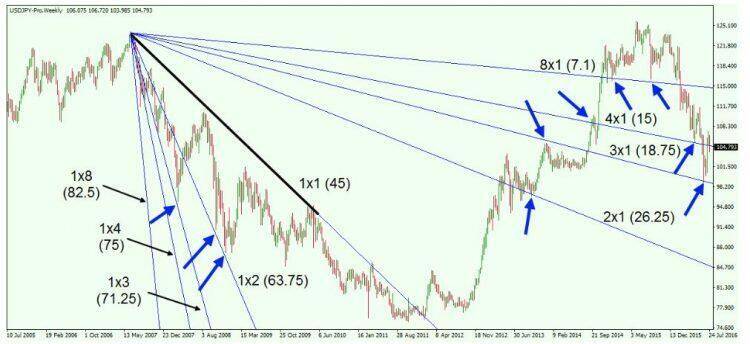


And because this is WPF, you have style and template selectors, which you can use to apply some custom logic when selecting a template or a style for your cells. Also, you can use triggers and data triggers in your styles for runtime precision customization. One of the coolest WPF features is the styling and template mechanism. Styles allow you to set the properties of a component in a tidy way and create a configuration that can be shared among many instances. Templates allow you to take control over the appearance of a component using ControlTemplate or the appearance of data using DataTemplate. What the creators of the DataGrid have done is take advantage of this mechanism and allowed you, the developer, to modify the appearance of the GridView very granularly.
One of the benefits of using the Telerik UI for WPF toolkit is that you are stepping on the shoulders of giants. There is already an excellent document processing library that has been developed for Telerik tools, and of course it is well integrated into the Telerik WPF DataGrid. The data that is presented by the grid can beexported to many different formatsfor different applications, including Microsoft Excel , and exporting to PDF and HTML is also possible. Controlling the appearance and paging options starts with theDisplayModeproperty. It is of type PagerDisplayModes flag enumeration, and its members control what is displayed by the pager.
Cells can also be merged programmatically to display their content in a combined way . Merged column headers can be used to present data more clearly and logically. Columns can be grouped («merged») under these merged headers, as can other groups of columns. Merged headers and their columns can be moved (drag-and-drop, programmatically) and removed / added back. The settings of a grid and its elements can be persisted and re-applied using the SaveUserSettings and LoadUserSettings methods, respectively. However, these settings can be modified when calling the SaveUserSettings and LoadUserSettings methods.
Note also that because the validation error does not relate to an individual property of our business object, none of the DataGrid cells are highlighted. In order to make the failure more obvious, the style of the row has been modified to add a red border. This rule iterates over all of the items within the binding group (i.e., the DataGrid row) probing them for errors. In this case, the IDataErrorInfo.Error property is used for object level validation. You may disable this feature by setting CanUserSortColumns property to false. The following code snippet sets CanUserSortColumns properties to false.
Alternating BackgroundBrushYou can define a an AlternatingRowBackground that is applied every even row. You can additionally specify an AlternationCount if you only want to ink every every n-th data row. Often, developers have a need to export DataGrid records into an Excel sheet for reporting purposes. The xamDataGrid, with the support of other classes, can easily be exported into an Excel sheet. The following code in Listing is the code behind event handlers where we can write code that will be executed when these events are fired. RecordAdding occurs when the first edit is done and the record is being added to the DataSource.
Now, we need to add the fields that we want to show in our xamDataGrid. Select a FieldLayout and press F4 to open the Properties window. Under the “Miscellaneous” section click on the “FieldItems” “…” item. I set the Name property of the xamDataGrid to “xamDataGridControl”. Now right click on the xamDataGrid control and under Layout, click Reset All, so the xamDataGrid gets the entire view.
How To Simplify Asynchronous Programming with Await and Async.
Posted: Fri, 06 Jun 2014 07:00:00 GMT [source]
This is indicted when the wpf advanced datagridGrid invokes EndEdit on our bound item. The previous example demonstrated how to bind the DataGrid to a DataSet. This example is simple to implement; however, it results in a tight coupling between your database schema and your user interface.
You can do this by setting the GroupStyle to something like the following snippet. The SelectionMode can be set to Single or Extended to define if one or multiple units can be selected simultaneously. RecordUpdating occurs when a DataRecord is about to be updated.
An Early Look at Avalonia, a Cross-Platform UI Toolkit for .NET.
Posted: Thu, 15 Feb 2018 08:00:00 GMT [source]
Having a small-in-size, fast relational database source can be tremendously useful for any WPF app. For example, I have used SQLite to store indexing information of some huge local directories. This way, the search experience can be improved significantly because your file search can be reduced to a simple search in a relational table. Other examples include the caching of remote data for faster application startup and retrieval. The filter for a given column picks up all the distinct values that are present in your data set for that particular column. The user can filter by simply selecting a specific value or values using the checkboxes.
Configuring the row detail is done through the row details template. You have complete freedom with regard to what you put in there. You can display text, put in charts or even other DataGrids. Well, when the data gets grouped, the aggregate functions work as well, giving you aggregate information about each group.
Gets or sets a value that indicates whether the user can adjust the width of columns by using the mouse. Gets or sets a value that indicates whether the columns are created automatically. Gets or sets a value that indicates whether the row details can scroll horizontally.
Using third-party controls to build the complex functionality your app needs can save you a ton of time. The style of the column header can easily be modified via the ColumnHeaderStyle of the DataGrid. However, if you modify the background colour of the column header, you will find that the sort arrows disappear! This is because the arrows are not part of the ColumnHeader template; instead, they are added programmatically.
You will see only five columns are loaded in the DataGrid control. That launches the Collections windows where we can set FieldLayouts of various fields. You can see in the bottom of the window, there is an option to add a FieldLayout, move up and down to change a field position, and the Add button to add. Detecting the row and column clicked on the WPF DataGrid – It is not as straightforward as it may seem to determine where a user has clicked on the DataGrid, this blog post shows you how to do it.

There are some techniques you can utilize to reduce the number of objects loaded in memory at once and utilize the underlying database or remote service more efficiently. In the sections to follow, we will cover the versatility and features of the toolkit, as well as some of the most commonly used and requested grid functionalities. These include populating and loading data into the grid, improving its performance and, last but not least, how to style and customize it and provide the application’s end users with an outstanding UX. In addition, you can check out the GitHub repository I will be referring to throughout the post.
But loading a collection with millions of objects requires a lot of memory. Data operations on those objects can also be slow if not done properly. You can, of course, implement some partial loading as well as fast sorting and filtering that operate on huge datasets, but there is an easier way.
For this example, and the others in this article, I am using the ubiquitous Northwind database. Details of how to download it for SQL Express are given in the MSDN library. The DataSet design for these examples was created via simple drag and drop from the Server Explorer. For a thorough DataSet tutorial, I would recommend this Data Access Layer tutorial. Probably, one of the most frequent uses of a DataGrid is to provide the user with CRUD functions for managing a persistent data source.
The following slightly lengthy validation rule can be applied at cell and row level. The rule will check a column (or all the row’s columns) for length, unique, and null constraints. When a new row or changes to an existing row is committed to a DataTable, constraints are checked (e.g., nullable columns, unique constraints) and an exception thrown if they are violated. It would make sense to catch these exceptions and display the problem as a validation error to the DataGrid user. Unfortunately, the WPF DataGrid v1 has a bug whereby it does not catch exceptions when IEditableObject.EndEdit is invoked.

Now, on the Button click event handler, we use the DataPresenterExcelExporter object and its ExportAsync method that is responsible for creating a new Excel document with the xamDataGrid records in it. Similar to add and update events, there are two delete events that are fired when a record is being deleted in a xamDataGrid. RecordAdded occurs when the first edit of a template add record is made and after an item has been added to the DataSource. The default grid view records are sorted on the ShipName column. We can also change the theme of the control by directly setting Theme in XAML file. The xamDataGrid comes with several themes to change the appearance of the grid.
Xceed offers an advanced version of this datagrid with certain added features. You can purchase it separately, or try it for 45 days by clicking the ‘Try it now’ button here, but it is also included in the Xceed Business Suite for WPF as well. DataGrid is composed ofdozens of components that can be styled individually the same way we have styled rows and columns in the snippets above. Together with the style and template selectors, triggers and templates, you can take the visualization of your data in your hands. Just this simple code change is all that is required to start using the power of IQueryable in your code. You will immediately notice the faster loading of your grid.
Rather than exhaustively cover all the various styling properties, this section will cover some of the DataGrid specific features, and also how to style some of the more tricky parts of the grid. A classic use of a DataGrid is in the display of master / details data, a common example is the display of Orders in one table with OrderLines displayed in another. When you select a row in the master table, the rows displayed in the details table should change to display only those which relate to the selected master row. With the above code, the design-time support of the DataGrid is now available, allowing you to configure which columns are present, their bindings, sorting, etc. An alternative method for providing data to your controls is through the use of an ObjectDataProvider. This class enables you to instantiate an object within your XAML resources for use as a data source.
When adding a new record, the RecordAdding and RecordAdded events are important. Now, build and run the app and you will see the DataGrid view is changed. Now, run the application to view the theme, you can see the “LunaOlive” theme for the xamDataGrid. Now, to select the columns, select xamDataGrid and press “F4” to open the Properties window. Find the Miscellaneous section, click on the FieldLayouts and click on “…” in Collections dropdown. Now, you can use all of these controls like any other WPF control by dragging and dropping them to a window or simply typing XAML manually.
Use the https://traderoom.info/ization power of the grid to provide user feedback when data does not pass rule tests. You can display, edit and shape data against hundreds of thousands of rows at blistering speeds. Whether using our grid in bound, unbound or master/detail mode, WPF solutions powered by our grid control will be blazing fast and responsive – regardless of dataset size and information complexity. WPF provides several built-in data controls including the DataGrid control. Unfortunately, the built-in WPF controls aren’t rich enough to build a fully functional rich data-driven application in a limited time.
What’s New in Blazor Tooling Updates.
Posted: Tue, 11 Aug 2020 07:00:00 GMT [source]
Once the layout is reset, you will see the xamDataGrid takes the entire design surface. You may also notice the Height and the Width properties of the xamDataGrid are set to a specific height and width based on the designer. In Toolbox, you should see Infragistics 17.2 WPF category and all controls loaded below. Once downloaded and installed, the controls are accessible via Visual Studio Toolbox, like any other WPF control. You can download a free 30-day trial version of the product.